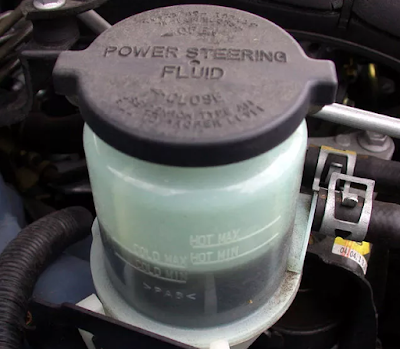How to Check Your Wiper Fluid
While it may not directly affect your vehicle's performance, your wiper fluid helps to improve your visibility on the road when you're driving. You'll use up your wiper fluid over time from cleaning your windshield. If you notice that your wiper fluid level is lower than normal, pop the hood of your vehicle and locate your wiper fluid reservoir (look for the "Washer Fluid Only" label). Locate the "full" label on your wiper fluid reservoir, and fill the tank until it reaches that mark!
How to Check Your Oil
Your engine oil is one of the most important fluids in your vehicle. It lubricates your engine's components, which reduces your engine's heat and prevents parts from rubbing against each other and causing damage. Typically, you should have your engine oil replaced every 3,000-5,000 miles, or whenever your vehicle owner's manual tells you to do so. Checking your oil only takes a few steps and should be done only after you allow your vehicle to cool down for an hour. Pop the hood of your engine and follow these directions to check your oil:
- After popping the hood, look for your engine oil dipstick (it should look similar to the image above). Put your finger through the loop and pull the dipstick out of your engine.
- Wipe the dipstick off on a paper towel or rag to make sure you can get a clean reading.
- Reinsert the dipstick and remove it again to read the oil level. There should be labels on the dipstick indicating whether you're at the maximum or minimum oil level. If you're below the minimum level, bring your vehicle in for an oil change!
How to Check Your Coolant
You should check your coolant level as well to make sure it's at its designated amount. This fluid is what keeps the radiators from freezing or overheating. Before you check your coolant, make sure your engine has cooled down or you could be sprayed by scalding water! Use your vehicle owner's manual to locate your coolant reservoir. It should look similar to the image above. Your coolant should have maximum and minimum levels similar to other reservoirs in your engine. Get your coolant refilled right away if it's below the minimum level!
Keeping your coolant level high reduces your engine's heat and helps to regulate internal temperatures in your vehicle. You should have your coolant levels refilled every 30,000 miles, or whenever your vehicle owner's manual tells you to do so.
How to Check Your Power Steering Fluid
Your power steering fluid helps to transmit power from your steering wheel to your vehicle's engines to give you smoother and easier steering on the road. If you want to check your power steering fluid, look for a reservoir similar to the one above (it should have a power steering fluid label on the cap). The labels on the exterior of the reservoir will have two sets of lines, one for a hot engine and one for a cold engine. Consult your vehicle owner's manual if you aren't sure what type of engine your vehicle has. If you need your power steering refilled, bring your vehicle in for service right away!
How to Check Your Brake Fluid
Your brake fluid helps to transfer power from your brake pedal to your brakes, allowing your vehicle to slow to a stop whenever you need it to. If your brake fluid is below the minimum level, you may encounter trouble while you brake as it may require more force. To check your brake fluid, you must first locate your brake fluid master cylinder reservoir. It should be close to your brake pedal, but if you can't find it, consult your vehicle owner's manual. Like other reservoirs, it should have a "full" and "empty" indicator on its exterior. If it's below the "empty" label, schedule a service appointment with us!
Checking your fluids at least once a month will help you to extend the life of your vehicle, reduce maintenance costs, and improve your safety on the road. Now that you know how to check your vehicle's fluids, you'll be able to determine whether or not you need to have important reservoirs on your vehicle filled. If you need your oil changed, brake fluid replaced, or other service, give us a call or schedule an appointment online right away! Consult our routine maintenance FAQ if you have any questions on power steering, coolant, or other important components in your vehicle.
Located at 9009 East Lansing Road in Durand, MI 48429, Hank Graff Chevrolet Durand wants to revolutionize your car buying experience. We’ll bring all the transparency and customer satisfaction you need while making the buying experience fun! If you have any questions be sure to contact us at (989) 288-2657 or head over to our website at www.GraffChevyDurand.com! We are proud to serve Durand and the surrounding communities of Owosso, Flint, Genesee Charter Township, Swartz Creek, and Corunna.
Follow us: Facebook, Twitter, Pinterest, Google+, YouTube and Instagram






No comments:
Post a Comment